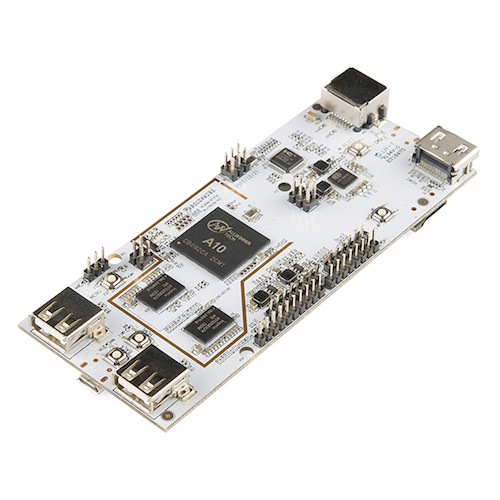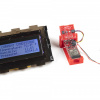It's Monday, Tax Day, and in Boulder, it's also snowing heavily and stubbornly refusing to become spring, so let's all take a deep breath and focus on the positive. Since we started carrying it about month and a half ago, we've been having a lot of fun exploring the potential of the pcDuino - our high performance mini PC platform that runs full-featured operating systems. Engineer Mike Hord has already written two tutorials for the pcDuino - Getting Started, which shows you how to hook everything up and solve a couple of the possible initial issues, and Programming, which walks users who are familiar with programming but not the pcDuino (and possibly not Linux) through writing their first program, as well as accessing the hardware resources on the pcDuino. If you haven't tried out the pcDuino yet, or you're interested in seeing what else you can do with it, these are great places to get started!
Between the two, there should be enough information for anyone who is reasonably comfortable with programming to realize a project using the pcDuino. Archlinux also supports the pcDuino and hosts some great resources. If you have any questions, suggestions or pcDuino projects of your own, feel free to leave them in the comments!








The pcD with 3 USB ports and more memory than the PI is a great platform.
But, what makes the PI great is the user Ecosystem that supports the platform. The pcD is "Way Better" hardware and some of the code provided is more advanced. But, the longer term support needs to "kick in" from the Ecosystem.
I have seen so far great support on the Forum from the pcD team. This is a great platform if you need a "real system" that works as a solid server.
If you start out take great care to perform all of the "patch" code before you evaluate the board. This is an early version. Some old boards may still have code that is NOT patched for some HDMI hardware. New hardware comes patched.
Be ready to use a TTL Serial to "talk" to the card if the video does not "wake up" on first boot. Several TTL Serial USB versions work fine. If you have two cards you can use a PI or pcD as a serial card also.
I use this card to develop AMAZON EC2 Cloud Server Control and Monitor Platforms. Just think, 200$+screen gets you NAGIOS and direct control of EC2 Cloud Servers!!! I have a wall of several of these in my NOC.
I want to see SFE do a tutorial on how to make a climate controlled coat.
It has already been done.
Lol! But seriously, I would love to see a tutorial on the stuff you have to consider when you make somthing like that deals with controlling and maintaining temperature, humidity? & light-levels (for visibility, not tans).
Hey,I have used pcDuino and I have to say that it is very user friendly so as a user I think One day pcDuino will be very successful.